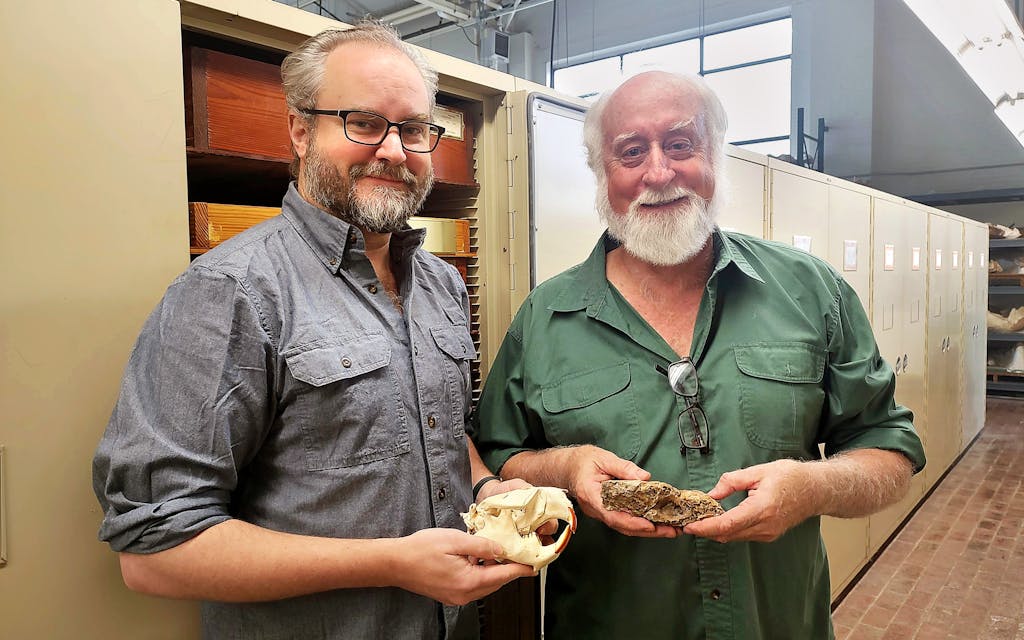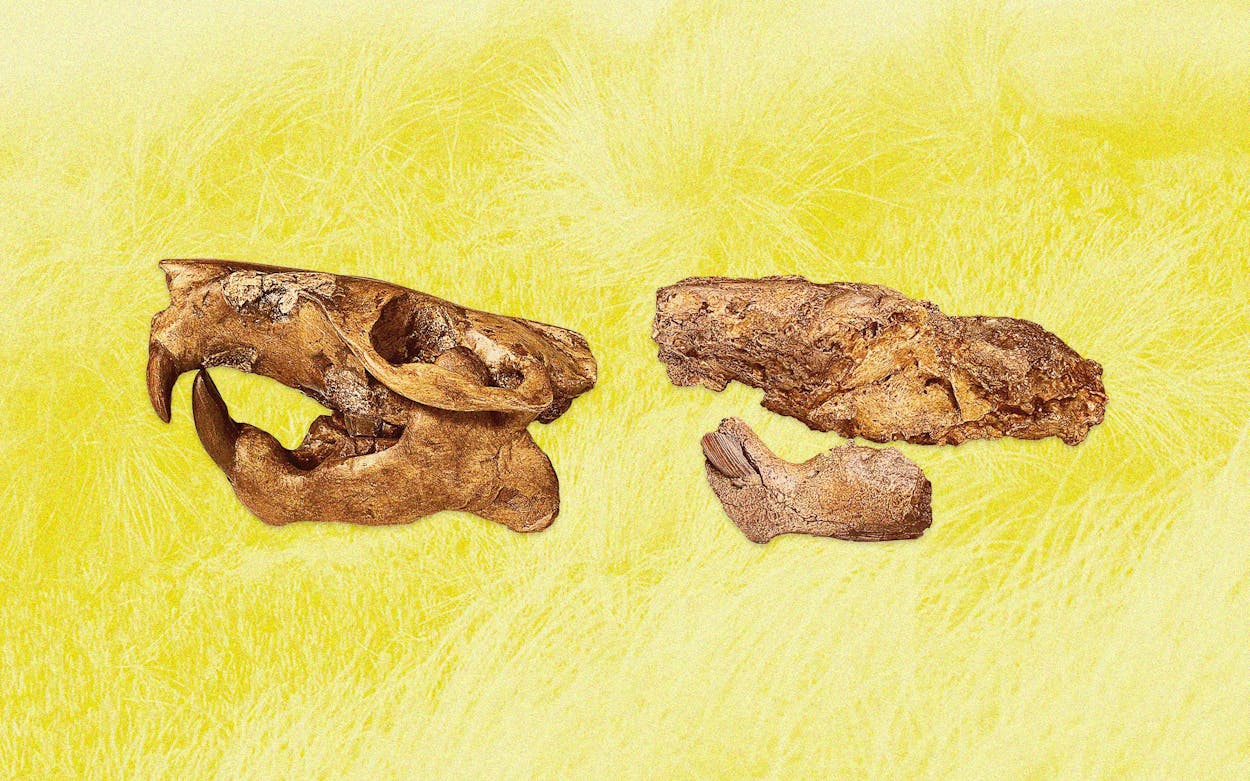This is a huge week for the paleontology and gas station mascot communities, because researchers at the University of Texas’s Jackson School Museum of Earth History announced they have identified a new ancient species of beaver—and they’re naming it in honor of our state’s beloved bucktoothed, red-capped nugget salesman, Buc-ee (yes, I know his name is technically Bucky, but I think that’s dumb and it’s something I’m trying to forget). On Monday, research associate Steve May and Vertebrate Paleontology Collections director Matthew Brown released a paper about a Miocene-era rodent fossil of a species they have christened Anchitheriomys buceei, or A. buceei for short, proving that those billboards are right: Texas is beaver country, and has been for at least 15 million years.
Further sweetening the caramel coating on this nugget of news is the fact that May and Brown found the fossil not in the field, but tucked away in a museum filing cabinet. A unique skull cast made when sediment seeped into the brain cavity of a dead beaver eons ago, the fossil was first discovered in the East Texas hamlet of Burkeville in 1941 by a team of Texas A&M University paleontologists, as part of a statewide WPA-sponsored survey. One of them, Curtis Hesse, suspected that they had stumbled across a previously unidentified species and wrote that he intended to name it, though he passed away before he was able to do so, in 1945. After that, the skull was forgotten amid the rest of A&M’s vast paleontological collection, including after it was moved to the University of Texas in the 1980s.
Forty-ish years later, the beaver bone randomly caught May’s eye. “I was just going through cabinets one day, looking at specimens,” he says. “I opened a drawer and there was this very interesting-looking skull, and it just really struck me as, ‘Wow, that’s a really interesting fossil. I wonder what it is.”
“So much of science happens because somebody looks at something and goes, ‘Whoa that’s cool. What is that?’ ” added Brown, the museum’s director. “It just opens up all these doors from there.”
Once May and Brown realized they had a new species on their hands, they worked to figure out exactly what it was. Thanks to diligent record-keeping from generations of Texas paleontologists—not just Hesse, but also Mark Francis, Jack Wilson, and many more—they were able to situate the find within an established family of ancient rodents. This genealogical tree was so intricate that I began to feel a little dizzy as they tried to explain how it all worked.
Here’s what we now know about A. buceei. The species wandered what is now Texas approximately 15 million years ago. It likely closely resembled the modern beaver, although it was around 30 percent larger. According to the paper May and Brown authored, A. buceei’s “dentary has a well-developed symphy-seal flange,” and “the cheek teeth are large with a very large P4/p4 relative to the molars.” Also “the ethmoidal foramen is located more dorsal relative to the optic foramen, and the posterior divergence of the upper cheek teeth is less pronounced.” No word on what color baseball cap he wore, or whether his beaver nuggets were sweet or salty.

It was May’s idea to name their discovery after Buc-ee’s. He was inspired by one of the countless “beaver country” billboards that pepper our state’s highways. “I thought, you know, most Texans don’t realize what a long history of beavers we have in Texas in terms of the whole paleontological record. This would be really interesting to acknowledge,” May recalls. It wasn’t hard to convince Brown. “He walked into my office and dropped a Buc-ee’s cap on my desk and said ‘What do you think?’ ” Anchitheriomys buceei was born.
It’s hard to overstate the importance of May and Brown’s discovery. It raises not only the possibility that Bucky himself is an ancient being that has been walking this land for the past 15 million years, but also that there might be other revolutionary finds just sitting in the Museum of Earth History’s archives, waiting to be discovered. May has already returned to sifting through cabinets, looking into evidence of A. buceei’s contemporaries, such as the gomphothere, the first elephant-type creature to show up in Texas. “That’s led to a whole other line of research: why do these fossil elephants show up at the same time as these fossil beavers?” May wonders. “So yeah, there’s a lot more work that can be done with specimens that are sitting in the cabinets there at the paleo lab.”
“We have somewhere in the neighborhood of over a million fossils in this building,” adds Brown. “We’ve got paleontologists coming here like kids in a candy store”—ahem, a kid in a Buc-ee’s candy aisle?!—“and these cabinets are full of new scientific stories. It’s our mission to make them available and to get researchers in to see and study these things.”
Naming one of those fossils after what is arguably the state’s most popular imaginary creature—or, as Brown called him, “Texas’s Mickey Mouse,” is an ingenious way to draw attention to that mission. Fingers crossed it’ll lead someone to find a fossil of an anthropomorphic grocery bag hidden in those cabinets.
- More About:
- Critters
- East Texas
- Austin








